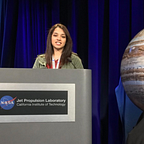Telescopes of the World: India’s Devasthal Telescope
In the Himalayan foothills near Nainital, India, stands the brand new Devasthal Telescope, the largest single-mirror optical telescope in Asia. The telescope was activated remotely on March 31, 2016 by Indian Prime Minister Narendra Modi and Belgian Prime Minister Charles Michel. It was designed and built under the joint leadership of the Aryabhatta Research Institute of Observational Sciences (ARIES), the Indian Institute for Astrophysics, and the Tata Institute for Fundamental Research, and Belgian firm Advanced Mechanical & Optical System (AMOS).
Devasthal in Hindi translates to ‘the holy abode of gods.’ Devasthal’s main scientific objective is to study astronomical events and to carry out imaging surveys of large astronomical structures like star clusters and galaxies. The telescope makes observations in the optical and near infrared wavelengths.
Every 2 weeks we send out a newsletter giving you an update of all that is happening at TeamIndus and opportunities for you to engage with us.
It is the only telescope in India that has an Active Optics system, i.e., the mirrors in the telescope are dynamically adjusted depending on the kind of adjustment being made. This is possible due to lightweight mirrors that are too flimsy to stand on their own and are therefore held up by actuators, supports that orient them correctly.
Devasthal’s 3.6-metre primary mirror has a diameter at least twice as that of India’s next-biggest optical telescope, the two 1m and 2m telescopes located in the Himalayas on the Ladakh Plateau. A larger primary mirror ensures that astronomers can see and photograph fainter objects. It also helps make observations quicker because more light can be gathered in any given amount of time.
Liked this article? Scroll below and recommend it by clicking the ❤ button.
